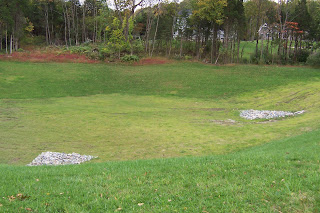Aerobic Lawn Mowing In The Garden

I recently purchased a cordless electric push mower. It weighs 93 pounds. My friends, most of whom haven't used anything but a self-propelled or riding mower in the last 25 years, are incredulous. I have always used a push mower for the exercise, but the rip-cord style one tied my mowing hours to Dan being home to start it for me. Now I'm free to mow as I please, when I please. Let me tell you, pushing that mower around in our hilly, uneven yard works up more of a sweat and heavy breathing than you'll get in any gym. And, instead of that locker-room odor, you're left with the fragrance of new-mown grass and a sense of accomplishment. To do our 8,000 square feet of "lawn," consisting of various fescues, ground ivy, moss, and assorted narrow-leaved weeds, takes about an hour. The first run only took 45-minutes, but the grass wasn't all in yet and I was racing around because I didn't know whether the charge would last long enough to get the whole...

